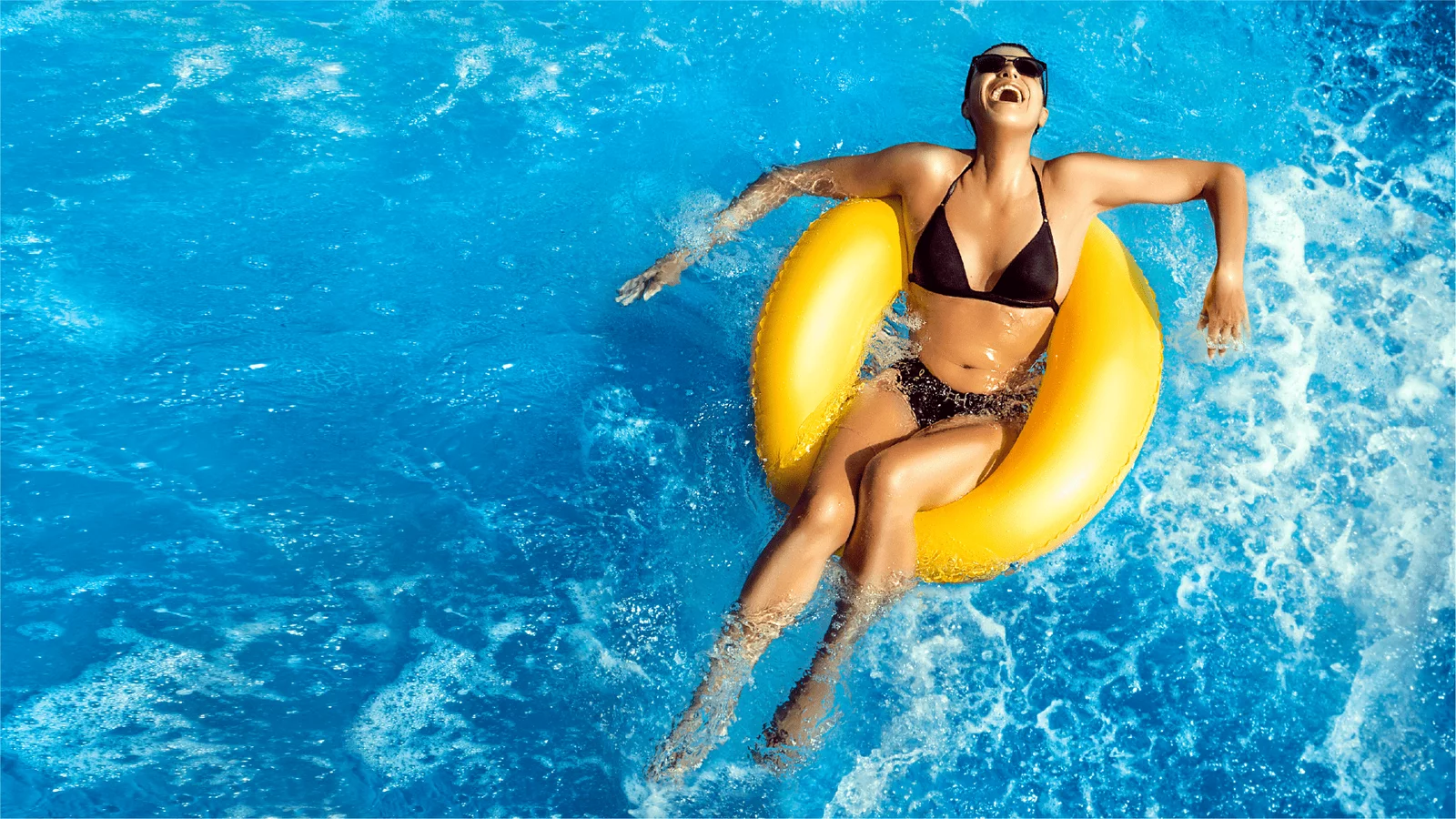The hottest season of the year is coming, and everyone wants to get their pool ready for summer and make the most of it! But have you checked the condition of your pool lately? As it’s common to leave it unused during colder days, your pool may need some special care to get it ready for the hot weather.
To help you get it ready for some refreshing swims, we’ve gathered several tips in this article to address the main problems that occur when leaving your pool unused without maintenance. Follow these instructions, put everything into practice, and get your space ready!
- Green and translucent pool water
In this case, the water acquires greenish tones, usually caused by a lack of chlorine, which promotes the proliferation of algae. To correct it, it is necessary to do an emergency treatment, dosing granulated chlorine in excess to disinfect the water.
Then, apply aluminum sulfate and light soda ash to settle all the dirt and, the next day, vacuum the bottom of the pool. It is essential to always maintain the residual chlorine between 1 and 3 ppm to avoid green water.
- Cloudy pool water
This phenomenon can be caused by several reasons and, when it occurs, it is impossible to see the bottom of the pool, even with emergency treatment. To solve it, first, check the water parameters, pH, and alkalinity with test kits, as the problem is usually caused by some index outside the ideal range.
If the pH is low, use light soda ash, and if it is above the indicated level, adjust it with pH and alkalinity reducer.
Alkalinity can be adjusted using baking soda if the need is to raise it, or with pH and alkalinity reducer if it needs to be reduced.
In some situations, cloudy water may come from inefficient filtration. In this case, settle all the particles using a clarifier and then vacuum the bottom of the pool.
- Foam in pool water
This can be caused by using a high-foaming tile cleaner or by an excess of organic material. In this situation, remove the excess foam with a sieve wrapped in a cloth and then perform emergency treatment by overdosing with granulated chlorine to disinfect the water.
Next, apply aluminum sulfate and mild soda ash for clarification and, the following day, vacuum the pool floor. Additionally, prefer biodegradable tile cleaners that do not promote foam formation and avoid the problem.
- Dead animals in the pool
This is a very unpleasant problem, but it can happen. In this case, instead of emptying the pool, perform emergency treatment using granulated chlorine for water disinfection and aluminum sulfate and mild soda ash for clarification of the debris.
Then, maintain free chlorine levels between 1 and 3 ppm. To prevent animals from entering, consider fencing the area or covering it with a tarp when not in use.
- Larvae and insects in the pool
Although this problem is much less troublesome than a dead animal in the pool, the step-by-step solution is the same: superchlorination with granulated chlorine and use of aluminum sulfate and soda ash. However, before treating the water, use a sieve wrapped in a cloth to remove the unwanted guests from the pool.
- Greasy water in the pool
As oil and water do not mix, it is common for oily substances to stay on the surface of the pool, giving it a greasy appearance. The causes are usually sunscreens and tanning lotions that come off the bodies of swimmers.
To treat, remove the layer of grease with a sieve wrapped in a cloth and perform superchlorination, using granulated chlorine, aluminum sulfate, and soda ash.
Count on Kisol Pools to get your home ready for summer!
If you do not yet have a pool at your home to enjoy the warmer days, this is the perfect time to get one! We offer much more than a fiberglass pool. We provide the opportunity for you to update and transform any backyard into a leisure oasis.

